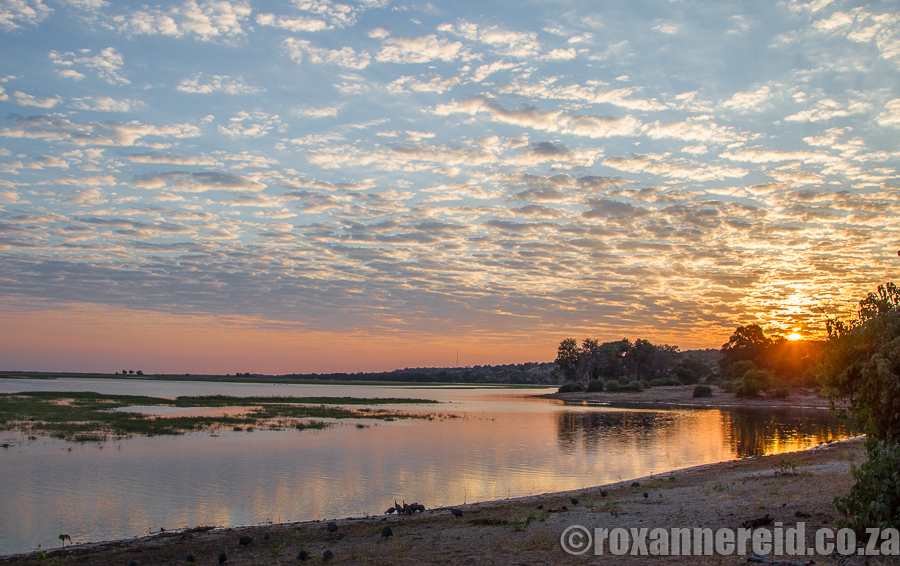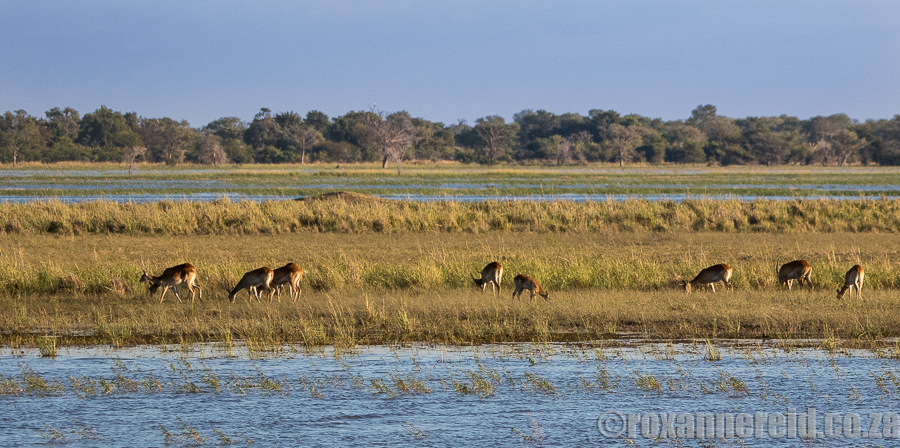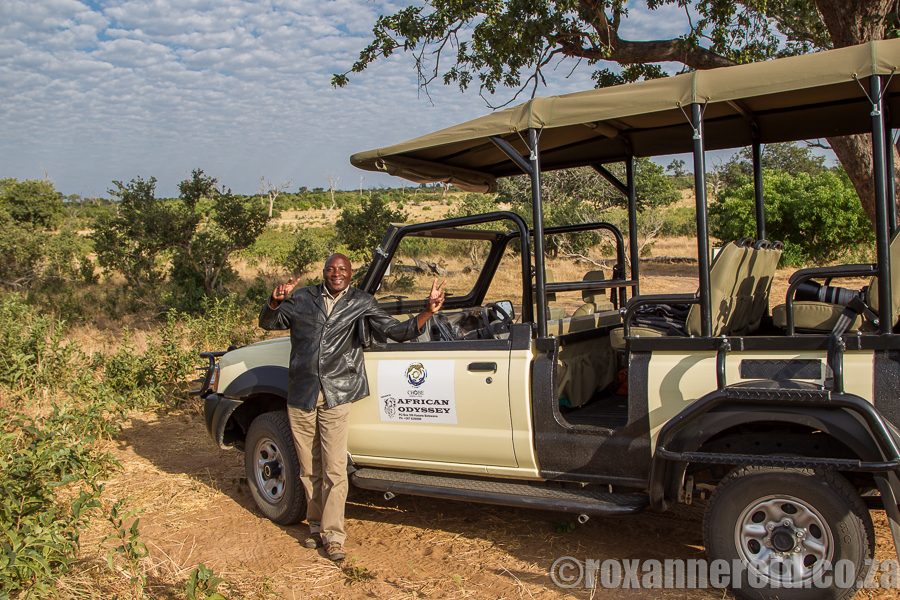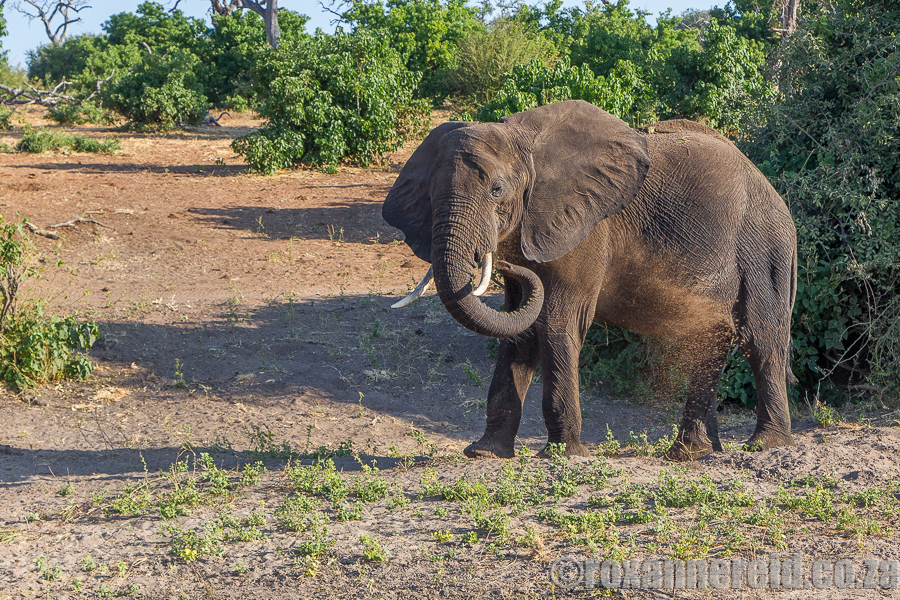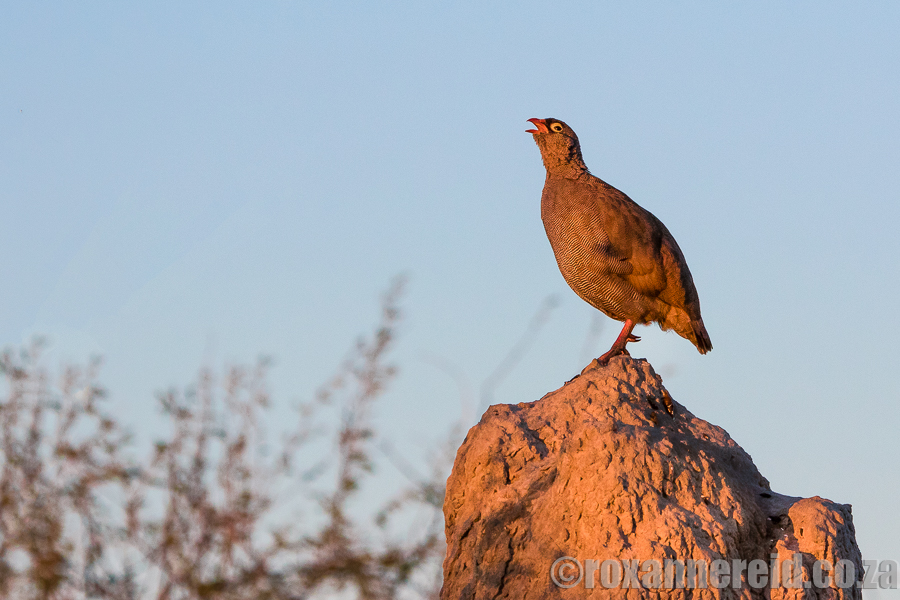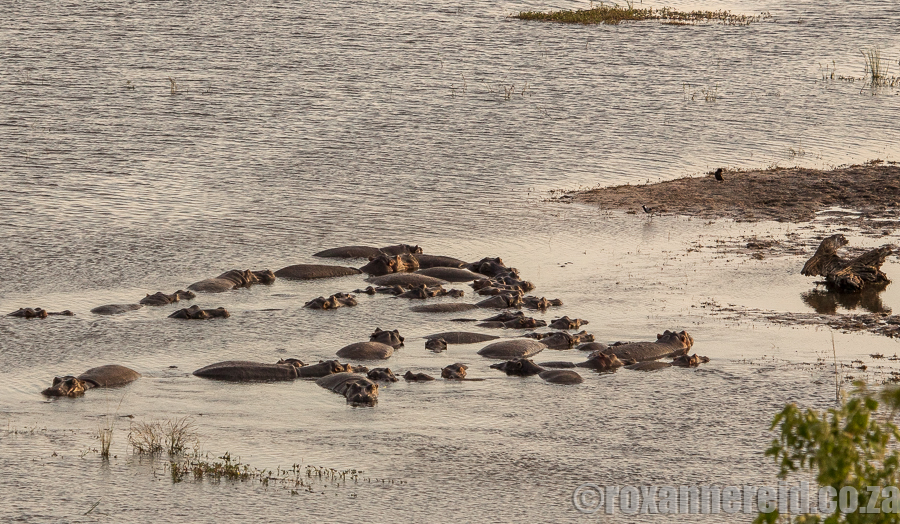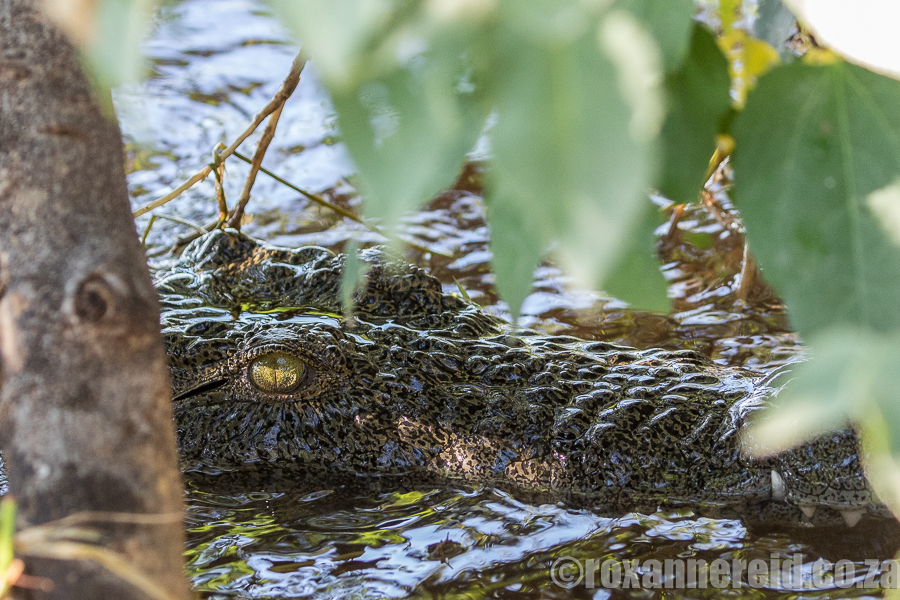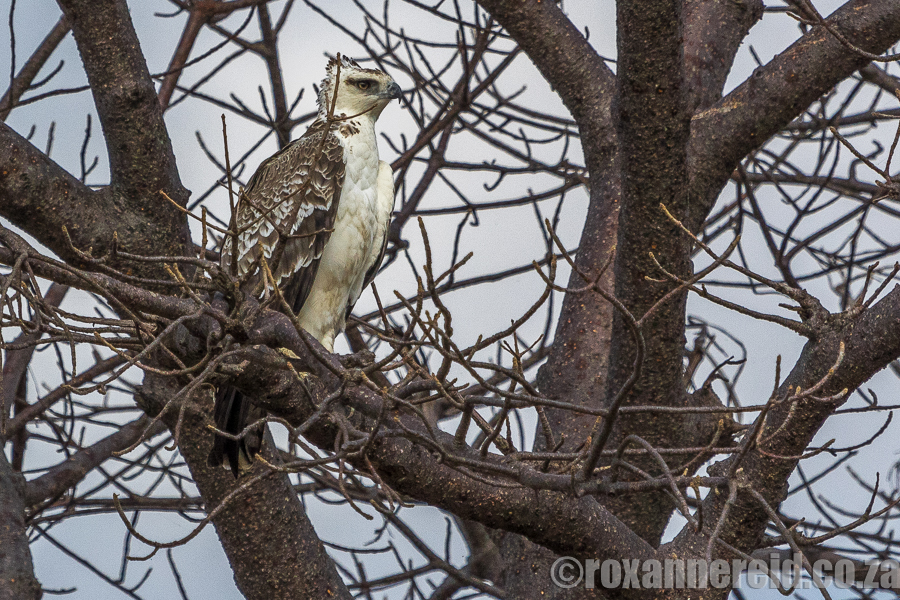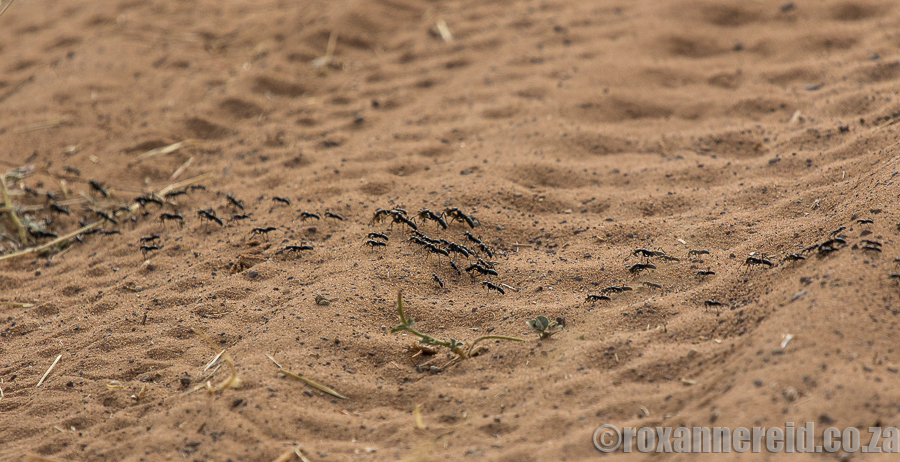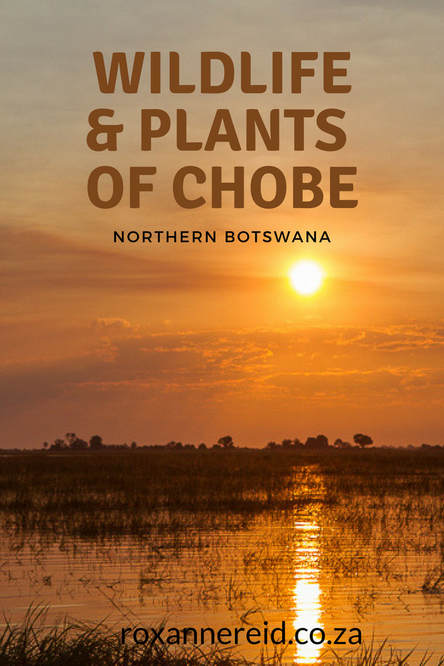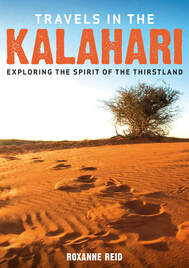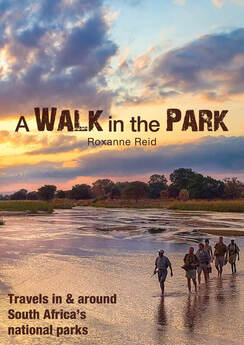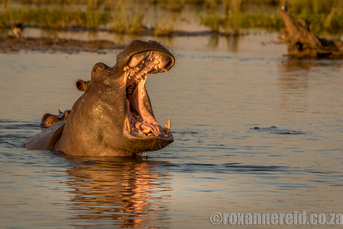
We were just two people dreading being swamped and squished by two large groups. Imagine our joy when we discovered they’d kept the groups together and given us our own safari vehicle, just the two of us with a guide to discover wildlife and plants of Chobe, Botswana.
The Sedudu Island stalemate
Mapa stopped on a sandy track with a view of Sedudu Island in the middle of the Chobe River, although with the floodwaters in May it was hard to make out the borders of the island. The other side of the island is Namibia’s Caprivi Strip, now renamed the Zambezi Region.
‘Buffalo, elephant and red lechwe walk across to Sedudu in the dry season to feed on the green grass,’ he said. ‘Old elephants with worn molars really like it because it’s soft. But now there are no animals because of the deep flood waters, except for a few big bulls that can swim across.’
The case was referred to the International Court, which ruled that the deepest channel would be declared the border. Experts sent to do the measuring noted that even when the Chobe River was full it was only 9m deep, whereas the water on the Namibian side was 14m deep – and therefore the international boundary. So in 1999 the island was officially declared part of Botswana.
The water in the Chobe River comes from Angola via Namibia, the Okavango and Linyanti. In the dry season the Chobe River flows east towards the Zambezi. ‘But when the Zambezi is full it pushes back and the Chobe flows west, so this is maybe the only river in Africa that flows both ways,’ Mapa grinned.
He was a mine of information on who eats what, as well as local medicinal plants and anti-witchcraft practices.
‘Local people use the fever-berry tree to kill fish,’ he said. ‘You put a branch in the water and fish will float to the top.’ The paralysing effect of the bark doesn’t taint the flesh so the fish can be scooped up for the pot. You can also burn the leaves and branches and use the smoke as a mosquito repellent in your house.
What about that woolly caper bush growing from the top of a giant termite mound? ‘You can burn the roots in your yard and the smoke will give protection against witchcraft.’
But our game drive wasn’t all about plants. We saw a pair of African fish-eagles on a dead tree, another on a nest of sticks. They’re territorial and mate for life. ‘One goes out while the other stays behind to hold the territory, and they call to each other to check the other is still there,’ he said. The male will feed the female on the nest, but otherwise it’s every bird for itself and they never share what they catch.
Once he finds a termite mound, he backtracks to the ant nest laying a chemical trail so he can lead the raiding party back to the mound. They break it open, sting the termites and drag them to the surface. When the raid is over, each ant will carry around ten termites back to the nest.
Note: I was a guest of Chobe Marina Lodge and the aha Hotels & Lodges group for two nights, but had free rein to write what I chose. I paid for all travel costs.
Like it? Pin this image!
Highlights of Chobe, Botswana
Tutored photo safari on the Chobe River, Botswana
Copyright © Roxanne Reid - No words or photographs on this site may be used without permission from roxannereid.co.za
